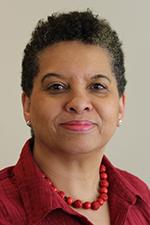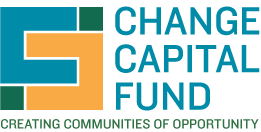MDRC Brief Highlights CCF Lessons for Donor Collaboration
MDRC’s fifth brief, Investing Together: Promising Strategies from a Donor Collaborative, is the final brief in a five-part series documenting the Change Capital Fund’s four-year economic mobility initiative.
MDRC’s brief highlights promising strategies that may promote effective donor collaboration and help donors manage the dual objective of building organizational capacity while setting ambitious program outcome goals with their grantees.
The report highlights a few lessons:
At CCF, all donors, regardless of contribution size, bring their expertise and an equal vote. MDRC finds that this “democratization of philanthropy” was further advanced by:
- Including intermediary organizations, such as LISC and Enterprise, at the table, because they are closer to the work in neighborhoods and provide valuable insights.
- Retaining a donor representative with expertise and experience in the fields of community development, philanthropy, and social services to support a reliable feedback loop between grantees and donors.
- Maintaining an active committee structure that accelerated thoughtful decision making across a large group.
MDRC finds that CCF’s dual goals of building organizational capacity for the purpose of leading to better program outcomes distinguishes CCF from most funding which focuses on one goal or the other, but not both simultaneously. The brief advises that this requires greater up-front clarity about purpose and reporting requirements from grantees.
According to MDRC, “there is growing interest in more formal collaboration among donors, given emerging discussions in the philanthropic sector about shared measurement, concerns about shrinking federal and state funding to nonprofits, and acknowledgment that a single donor organization may not be sufficient to help a service provider meet increasing demand or make headway in solving complex social issues. It is an important time, therefore, to discuss what it takes to develop a well-functioning funding collaborative – one that retains donors over the course of the initiative, promotes thoughtful yet streamlined decision making, and defines goals and tracks progress toward their achievement.”
MDRC will release a final report later in 2018 that will share more lessons learned from the CCF initiative and discuss the policy implications of this work.
Read the brief here.
Flying High: A Success Story
 The CCF-funded Stronger Together initiative, developed by Fifth Avenue Committee, is helping individuals without a high school degree get on the career path. Here is one story:
The CCF-funded Stronger Together initiative, developed by Fifth Avenue Committee, is helping individuals without a high school degree get on the career path. Here is one story:
Eli Eason was in third grade when he first stepped foot on an airplane, a jumbo 747 en route to Morocco. For eight hours, he toured the plane, met the pilots, and visited the flight deck. From that day, Eli dreamed of becoming a commercial airline pilot.
His dreams were put on hold, though, when he suffered an injury in high school and sunk into a depression that led him to drop out.
A few years later – still wanting to be a pilot – he resumed his journey through the Stronger Together (ST) program. Within six months, he had studied for and passed all five TASC tests required for a High School Equivalency Diploma. Eli then worked with the ST College Transition program to find the right place for his aviation education and training.
Recently accepted to Vaughn College, where he will major in flight operations, he lauds Brian and Carla from Fifth Avenue Committee for their support, guidance, and encouragement – and their investment in him. His dream within reach now, Eli wakes up happy every day. And, he has bigger dreams: once he becomes a pilot, he wants to return to Red Hook to motivate children living in his neighborhood and show them that even the dreams of a kid from the projects can come true.
Donor & Grantee News
 New York Community Trust’s Pat Swann has penned an opinion piece for Philanthropy New York, about the progress made in affordable housing, including new tenant protections, investment in eviction prevention legal services, inclusionary zoning created in several neighborhoods, and the mayor’s $1.5 million commitment to explore community land trusts as a housing preservation strategy. But, she also points out there is still work to be done – from protecting immigrant families reluctant to use the court system to thwarting the annual loss of thousands of rent regulated apartments.
New York Community Trust’s Pat Swann has penned an opinion piece for Philanthropy New York, about the progress made in affordable housing, including new tenant protections, investment in eviction prevention legal services, inclusionary zoning created in several neighborhoods, and the mayor’s $1.5 million commitment to explore community land trusts as a housing preservation strategy. But, she also points out there is still work to be done – from protecting immigrant families reluctant to use the court system to thwarting the annual loss of thousands of rent regulated apartments.
Fifth Avenue Committee (FAC) has issued, in partnership with the Urban Land Institute, a report, A Vision for a Greener, Healthier, Cooler Gowanus: Strategies to Mitigate Urban Heat Island Effect with recommendations that include green jobs for local residents, jobs which the CCF-funded initiative Stronger Together partners are already training local residents for. The report also calls for leveraging the upcoming rezonings to advance the city’s first eco-district. FAC’s Executive Director Michelle de la Uz has written an op-ed for City Limits that discusses how the Gowanus rezoning can be leveraged to create a more equitable and sustainable community.
